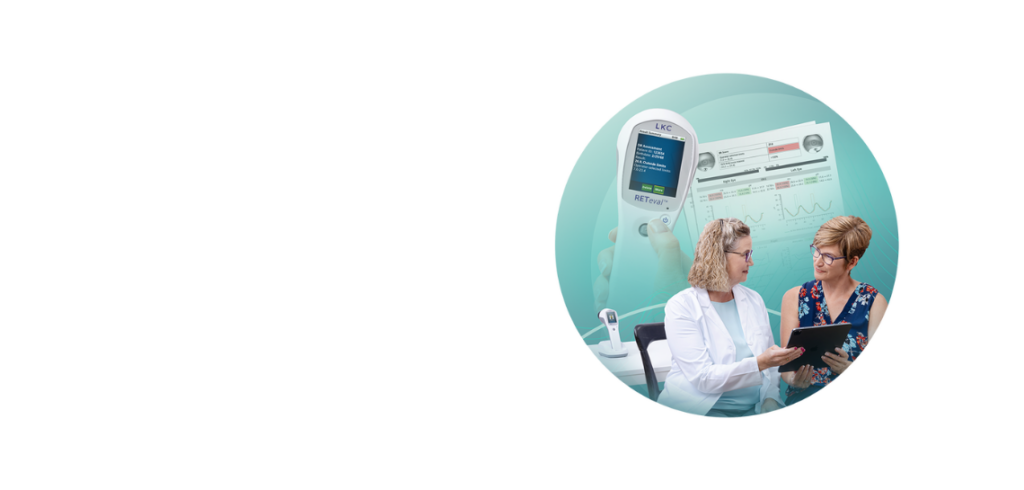
PREDICT AND PROTECT WITH HANDHELD ERG
The Diabetic Retinopathy Test to Predict Your Patient’s Future
Give your patients the advantage of timely, actionable information with the only handheld ERG that delivers an objective diabetic retinopathy exam: the RETeval®.
As a clinician, you want to protect your patient’s vision – but diabetic retinopathy progression isn’t always predictable.
Traditional imaging may not reveal functional damage until it’s too late, especially in non-proliferative stages. That means missed opportunities for timely diabetic retinopathy treatment and better patient outcomes.
The RETeval Solution:
- Predictive DR Score – Stratify progression risk and determine which patients need more of your time and attention
- Non-invasive – No dilation, no corneal contact
- Efficient – Test in minutes, train staff quickly, integrate into any workflow
- Versatile – Ideal for primary and specialty care
Backed by science
Landmark Research
The RETeval handheld ERG’s objective DR Score has been validated by more than 20 peer-reviewed publications since 2016. Explore the full research library here.
2025
RETeval DR Score ≥ 26.9 predicts 79% chance for progression from moderate to severe NPDR to vision-threatening complications in less than 1 year.
Davis Q, Waheed N, Brigell M: Predicting Progression to Vision-Threatening Complications in Diabetic Retinopathy. Ophthalmology Science. June 2025.
2020
RETeval DR Score ≥ 23.5 predicts an 11-fold risk of requiring intervention in 3 years.
Brigell M, Chiang B, Maa A, Davis Q: Enhancing Risk Assessment in Patients with Diabetic Retinopathy by Combining Measures of Retinal Function and Structure. Translational Vision Science & Technology. August 2020.
2016
Confirms RETeval’s efficacy in detecting vision-threatening diabetic retinopathy.
Maa A et al: A novel device for accurate and efficient testing for vision-threatening diabetic retinopathy. Journal of Diabetes and Its Complications. December 2015.
Why the DR Score Matters
Latest research confirms a RETeval DR Score ≥ 26.9 outperforms 55 diagnostic parameters on 4 testing modalities, including OCT-A, ultra-widefield fluorescein angiography, and fundus in predicting progression to vision-threatening complications within 1 year.
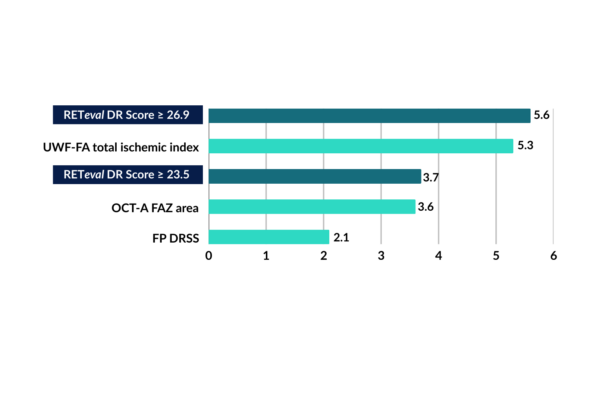
- Allows targeted referrals and/or resource prioritization, reducing overtreatment and missed progression
- Creates potential to improve DR staging systems and support value-based care models
- Supports evidence for inclusion of ERG in the American Academy of Ophthalmology’s updated Preferred Practice Pattern for detecting and managing DR
The relative risk (RR) or risk ratio is the ratio of the probability of an outcome in an exposed group to the probability of an outcome in an unexposed group. Together with risk difference and odds ratio, relative risk measures the association between the exposure and the outcome.
SCHEDULE A DEMORETeval: Making a Difference in Diabetic Retinopathy Care
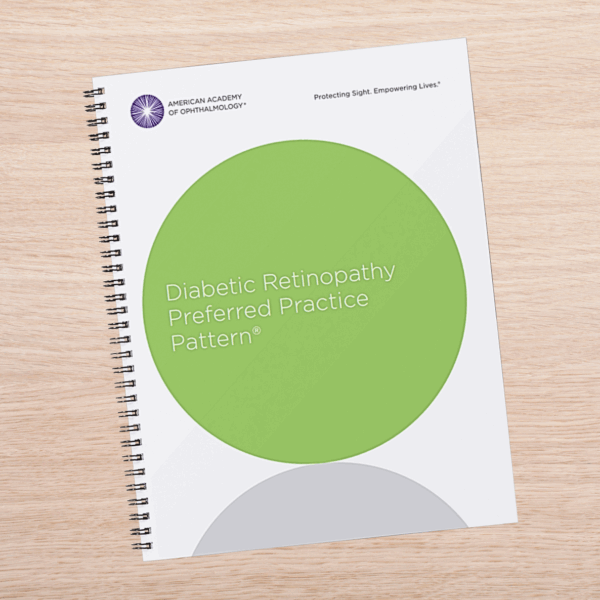
ERG Named in Preferred Practice Pattern Guidelines for Diabetic Retinopathy
The American Academy of Ophthalmology’s inclusion of ERG demonstrates its valuable role in both diagnosing and managing diabetic retinopathy. This decision reflects the growing recognition that objective, functional testing, alongside structural imaging, is critical for a comprehensive DR assessment.
See why clinicians are calling this a pivotal moment in eye care history >
designed for clinical reality
Why RETeval?
“The inclusion of ERG in the AAO’s Preferred Practice Pattern guidelines is a pivotal moment in eye care history. As diagnosticians and treating physicians, we need an objective, functional complement to structural imaging. ERG provides this, helping us detect early retinal dysfunction that may precede visible structural changes.”

see reteval in action
Case Studies & Clinical Insights
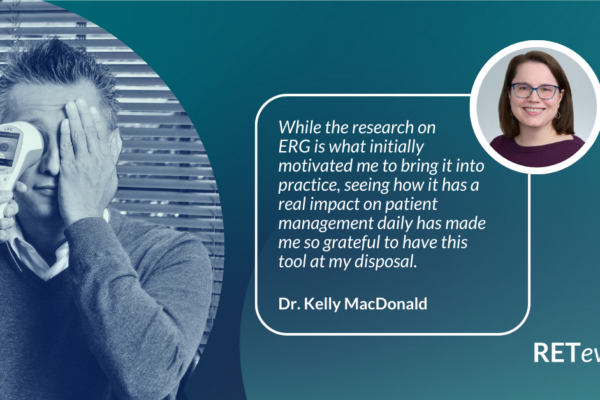
A Tale of Two Patients: How ERG Uncovered Hidden Differences
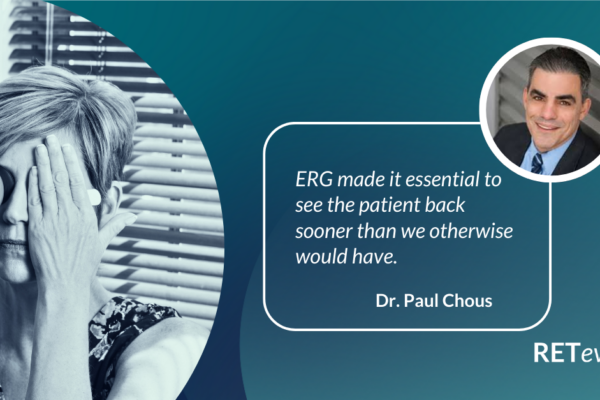
The Predictive Value of Combining Diagnostic Technologies

ERG’s Role in Diabetic Retinopathy Progression Monitoring
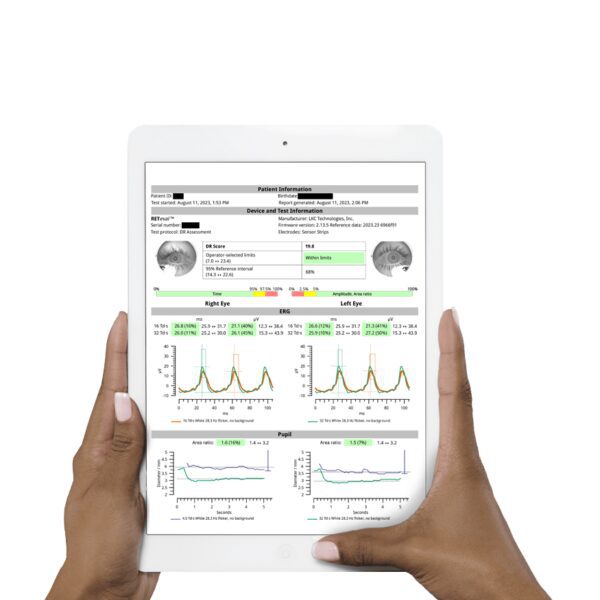
RETeval DR Assessment Reports
Easy-to-interpret, color-coded reports with:
- Age-adjusted reference data
- Predictive DR Score
- Functional stress measurements
- Pupil response metrics
Ready for more?
Protect vision. Improve outcomes. Predict the future of diabetic eye disease.




